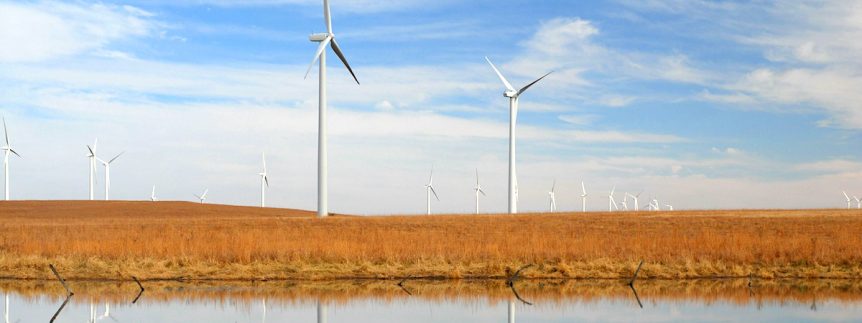The Texas panhandle provides valuable resources for developing wind energy and, simultaneously, hosts thousands of playas, an important wetland habitat for migratory birds. When working on creating wind energy farms in this area, considering these valuable habitats is an important step in the development process, but avoiding playas can be difficult in places like Texas where they carpet the landscape.
“It’s just good stewardship to avoid negative impacts while being able to develop, build and operate a renewable energy asset.”
Ty Shelton, a former wind developer based in the panhandle, worked to strike a balance between developing effective renewable energy while also avoiding as many playas as possible. While developing previous projects, Shelton worked with environmental natural resource professionals to assess playas in the area and establish voluntary setback requirements from playas.
For Shelton, taking the natural landscape into consideration is essential to creating and maintaining a successful project.
“It’s just good stewardship to avoid negative impacts while being able to develop, build and operate a renewable energy asset,” he said. “We all have to work together and cooperate with each other to figure out ways to provide non-polluting affordable electricity without having terrible negative impacts on our environment and our ecosystem.”
Shelton has been learning about ways to successfully avoid playa clusters and mitigate negative impacts on birds for years. The work he and his team does can be used as an example for how playas and wind energy infrastructure can exist harmoniously in Texas.
Shelton is the asset manager for Texas wind projects at Novatus Energy. Previously, he owned Big Sky Wind Energy, a project development company.
Understanding Playa Avoidance Guidelines
When Shelton began working in the wind development field, he wasn’t aware of much guidance when it came to operating near playas. Now, playa avoidance is more commonly discussed and continues to be on the checklist for developers when working on a project.
“The industry is still very, very new compared to other energy industries and playa avoidance is just something that wasn’t on our radar ten years ago,” Shelton said. “We’re all learning, doing our best to minimize our impact, and be good stewards of our environment, but we’re going to be learning things along the way.”
It is well known that playas, when wet, can attract large numbers of birds and provide important habitat for feeding, roosting, and resting. When wind farms are developed around playas, direct impacts and, more importantly, indirect impacts such as habitat loss, become a concern.
Since playas go through wet and dry cycles, they can be almost unnoticeable on the landscape, presenting problems for developers once water and birds show up. Providing accurate information about avoiding playas makes this situation less likely to occur. Guidance and advice around avoiding playas also bolsters the wind energy industry as a green one, which PLJV fully supports.
Protecting Playas
Shelton said he can imagine a scenario where siting guidelines could hinder a project but believes the alternative is more likely, based on his previous experience using playa guidance from Texas Parks and Wildlife.
“In my experience, they can coexist without negatively impacting each other — the playa lake network for a wind project and vice versa.”
“I think the existing guidance does a good job protecting playa lakes as a natural resource, and from what I’ve recognized, I don’t think that guidance would have a real negative impact on the developer trying to go out there and develop another wind project. The guidelines seem to be reasonable and don’t have a terribly negative impact on the number of megawatts that you can see in a certain target area,” he said. “In my experience, they can coexist without negatively impacting each other — the playa lake network for a wind project and vice versa.”
One project Shelton points to as an example of success was near Claude, Texas. The project is currently in its fifth year of operation and so far hasn’t seen any indications of negative impacts on waterfowl or other migratory birds.
“We believe that we were very effective in minimizing our impact on the network of playa lakes in the area,” Shelton said. “As far as everything that we’ve identified, noticed and recorded, there are no noticeable negative impacts that we’ve recognized as far as the wind project’s impact on wildlife. I have to say the same result for playa lakes; I just can’t think of any negative impacts to date.”
This work to ensure there are no negative impacts is ongoing. Shelton’s team is currently doing a playa assessment as well as a raptor nest survey on the project in Claude and others.
As a fifth-generation landowner in Texas, Shelton feels a responsibility to be a good steward of not only his own land but any land he works on.
“I don’t know if this is coincidence or not but people that I’ve partnered with have all had the same approach to how to mitigate negative impacts on the environment so I’ve been really pleased with that,” he said.
PLJV’s state-of-the-art maps and decision support tools used for biological planning can be adapted to help energy developers site new projects to minimize impacts to birds and their habitats.

